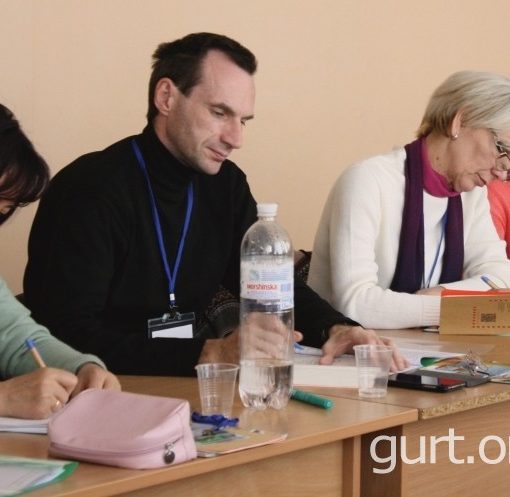
Propaganda as a tool of influence has been used for a long time. It is impossible to imagine politics without it. During military hostilities, as is currently the case in Ukraine, propaganda plays an important role – it largely shapes the perception of events in society. Let’s analyze in greater detail how this happens.
If you think that propaganda is some kind of new phenomenon, then you are wrong. Propaganda is as old as the world. As soon as people began to spread information, they began to propagate, although, of course, they did not use such word back then.
***
WHERE DOES THE TERM “PROPAGANDA” COME FROM
The emergence of the term “propaganda” is associated with the Pope’s bull dated June 22, 1622, which was called Congregatio de Propaganda Fide. The message talked about the creation of a body that would coordinate missionary activity, that is, would take care of spreading the correct creed from the Vatican’s point of view and convincing people of other religions. Therefore, the word is of Latin origin and literally means “which is subject to distribution”.
This is how we came to define the term propaganda – it is the purposeful dissemination of ideas and models of behavior with the aim of influencing public opinion. Such features as one-sidedness, massiveness, systematicity and manipulativeness distinguish it from ordinary persuasion.
***
IS PROPAGANDA BAD?
Nowadays, we often perceive the concept of “propaganda” with a negative connotation. However, at first there was no such connotation. By the end of the 18th century, the term had spread beyond the church sphere and began to be used more often in a political context. Only by the middle of the 19th century, when it was already solidly associated with politics, it began to acquire negative features in public mind. In particular, this process is associated with the French Revolution.
After the First World War, a number of dictatorships appeared in Europe, and the term “propaganda” was perceived mostly negatively. The Third Reich had the Ministry of Propaganda and Public Enlightenment, while the USSR had the Department of Agitation and Propaganda under the Central Committee of the Communist Part of the Soviet Union.

The current negative attitude towards propaganda is largely based on the fact that many people perceive it exclusively as a totalitarian method of spreading information. The example of Russia, which is the “totalitarian” state and actively uses propaganda, serves yet another “evidence” to confirm such thesis.
It is necessary to understand that in a totalitarian state all propaganda is subordinated to a single goal, it has an ideological task (and there is only one ideology in a totalitarian regime) and all its means and tools are aimed at such goal. Propaganda in such society deals with the creation of a certain model of the world, which is beneficial to authorities. At the same time, not only means of journalism are used, but also arts, especially literature, music and cinema as the biggest ones in terms of reaching the audience. Another tool that had often been used during the USSR period is mass demonstrations, which were supposed to prove popular support for the government. The purpose of such informational work is to change the worldview of society in a direction convenient for the ruling elite.
Propaganda plays on the fact that:
- firstly, people are social beings, that is, we always pay attention to how our environment behaves;
- secondly, it is easier to follow an example than to make one’s own way, and this applies to behavior patterns as well;
- thirdly, people tend to trust authorities, so opinion leaders are necessarily involved in any propaganda.
It is because of these features of perception and behavior that people fall under the influence of propaganda.
It is difficult to imagine a person who has never read books with a propagandist element (such, as a rule, are in the school curriculum on literature) or has not heard propagandist songs. The difference between totalitarianism and democracy is that in a democratic society there is access to works which reflect different points of view, while in a totalitarian society there is only one “correct” option, while everything else remains at best unpublished/unnoticed, at worst – under direct prohibition and even punishable by persecution.
In order to even better understand whether propaganda is purely evil, let’s explore what functions it performs.
***
PROPAGANDA FUNCTIONS
Of course, forms of propaganda become more perfect with the development of technologies and with the expansion of media space, but its functions remain constant for a long period of time, as V. Torichnyi, the researcher of this issue, comments.
Modern propaganda performs the following functions:
1. Struggle with ideological opponents.
2. Management of events interpretations based on the audience’s conviction of the legitimacy of the views and positions of the communicator. That is, the task of propaganda in this context is not to inform, but to rebuild perception in a way that is beneficial to the communicator. The mass audience is offered specific examples of thinking and evaluating events (you don’t need to dig it yourself – here’s a sample). We can see a vivid embodiment of this function based on the example of Russian propaganda.
3. Mandatory response to enemy attacks, neutralization of its efforts. This is where a tool of counter-propaganda comes into use. This is a very important function: a competent response to the enemy’s propaganda can nullify all its efforts. That is, as we can see, propaganda can be very useful – in such way we have repeatedly broken carefully constructed Russian propaganda messages.
4. Control over the consciousness of the population.
5. Practical activation of consciousness, i.e. encouraging the audience to take certain actions.
Propaganda is a form of communication. Whether we like it or not, this is an integral part of the information interaction between the political leadership and society. In wartime, it is closely related to the tactical and strategic tasks of the front, however, in general, it retains its functionality, as described above.
One must be able to recognize the enemy’s propaganda and neutralize it. For counter-propaganda to be successful, it must be of better quality than propaganda, which is more difficult. Currently, Ukraine is quite successful in dealing with Russian propaganda. The result of this is that both Ukrainians inside the country and the world community at large know what is really happening, despite Russia’s numerous and constant attempts to distort the facts.
Illustration: Patrick Fore, Unsplash open source
Author: Iuliia Panchenko




